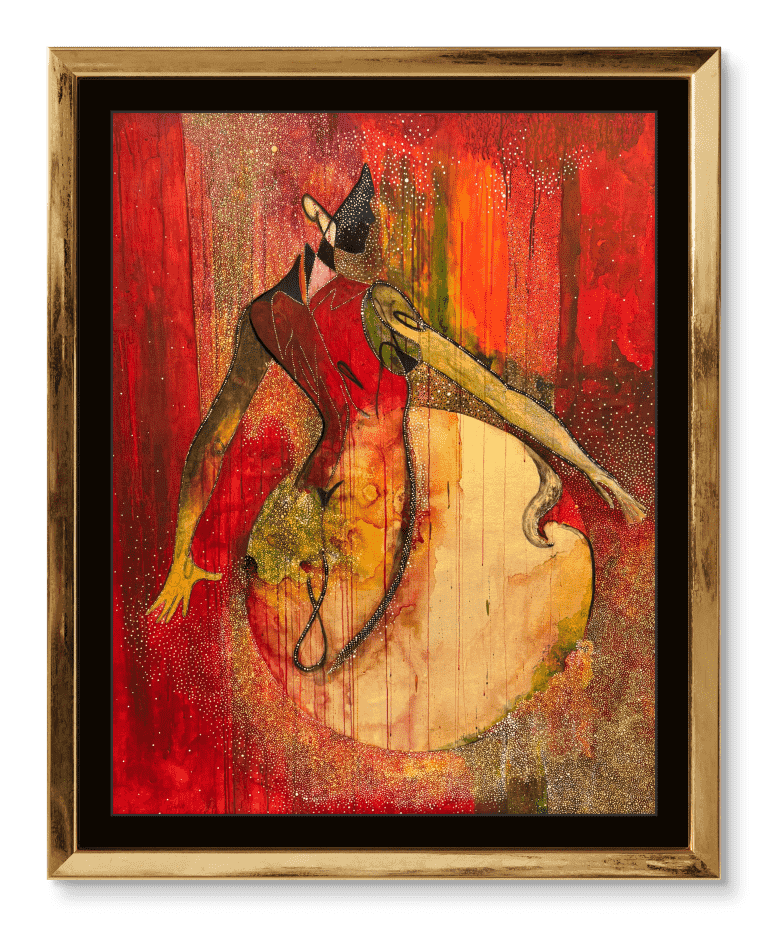All those years’ worth of experience accumulated, resulting in her current solo show The Path to Other Paths, curated by Mariam Hanif. It is noteworthy that, Ehsan after a tedious artist’s block of six years was able to create a total of 10 artworks within a span of a year. Which ultimately brings us to her creative process.
Graduated from city’s one of the prestigious institute, National College of Arts, Lahore. Ufaq Ehsan holds a bachelor’s degree in Fine Arts; batch of 1996. Having a diverse and vast experience working as a professional artist as well as a Volunteer Art Therapist in institutes like Ganga Ram Hospital and Fountain House for past 20 years. On top of being a full-time artist, an art therapist and a single parent, Ehsan is a teacher as well. Having her own studio where people of all age groups are welcomed, joining her in a journey their own catharsis. Ehsan took great pride in mentioning that her studio had a pair of a nani and nawasi, or how she breaks the ice with kids that sometimes might result in a kid painting a ‘confused burger’. Furthermore, she’s worked with children with special needs as well, stating their expression of art always has had this intensity to it since they possessed a sensitivity we are forced to get rid of as we mature being a ‘normal’ person.
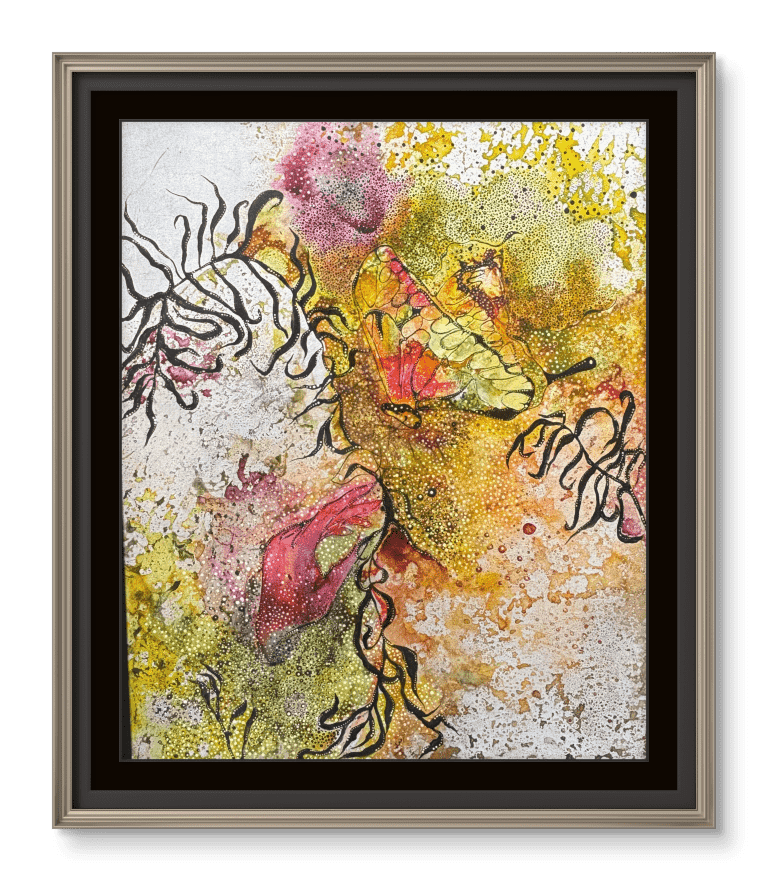
All those years’ worth of experience accumulated, resulting in her current solo show The Path to Other Paths, curated by Mariam Hanif. It is noteworthy that, Ehsan after a tedious artist’s block of six years was able to create a total of 10 artworks within a span of a year. Which ultimately brings us to her creative process. When she sat down for a one on one, she attributed Sufi Literature as a major source of inspiration. Sufi Literature coupled with artist’s sheer interest in human psyche, Ehsan’s focal point is symbolic abstraction. An interesting oxymoron in my opinion. Symbols serve as a threshold between the realms of the physical and metaphysical. Along with that Alia Zafar’s spiritual poetry was the one driving force behind these art pieces whose titles are aptly derived from the verses of Zafar’s poetry.
Ehsan turned to spirituality after a traumatic series of events in her personal life. There she found a friend who was not there to reprimand or judge her. Allah was that friend who listened and at times talked to her through Qur’an. Instead of dealing with the holy scripture like something that must be put on the top shelf never to be touched again in the name of respect, as in the norm in our society. She decided to use the holy book in its truest essence . as a source of research and ultimate education. She found solace in the divine words, consequently bringing her peace and strengthening her intuition. When asked why she had the urge to create although she’d found the said peace, she had the most uncomplicated response. Stating that regardless of the fact that she had the peace of mind, she simply wanted to put in her two cents, sharing this very clichéd spiritual journey in a manner that was under her control, had her authentic voice. Hence making it a private affair that deserved to be celebrated one way or another.
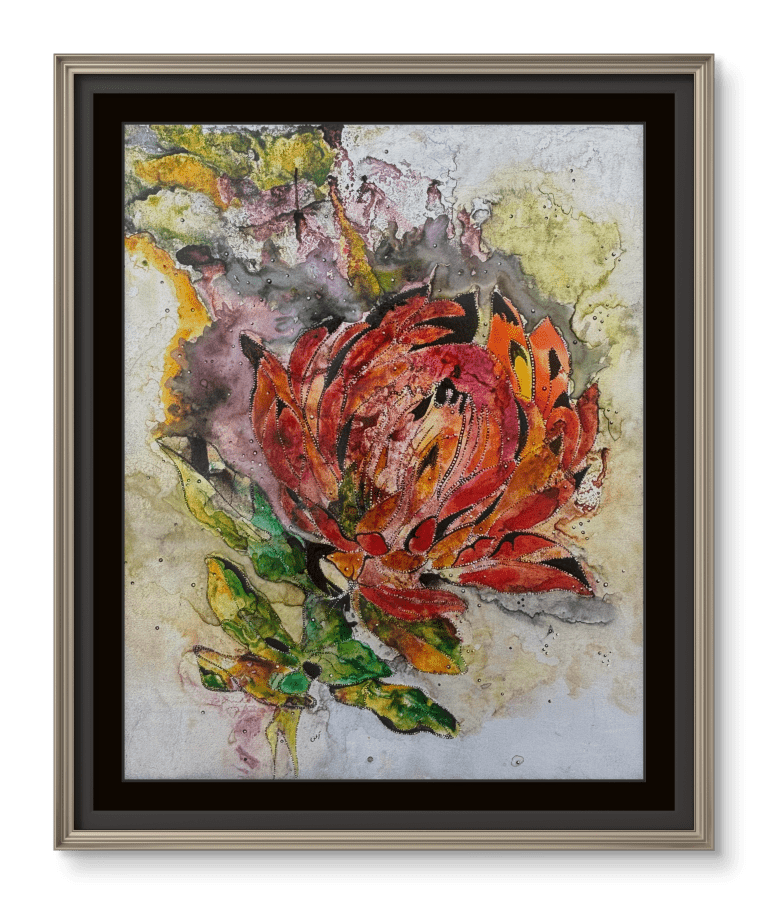
Struck with sheer simplicity that comes as a natural consequence after being in touch with one’s soul and the intensity of life on the both ends of the spectrum Ehsan characterises God as sacred feminine. A symbol with multifaceted interpretation, subsequently reflects in her artwork titled Walking Barefoot in Corridors. The concept of femininity is a divine one for both are associated with an urge to create. One might say femininity is an appendage to the divine being that God is. However, “she’s a woman in defiance”, says Ehsan when she talked about the aforementioned art piece. The lady is a phoenix, her silence being the fire that burns her, turning into the ashes and then she is born again. She creates herself anew.
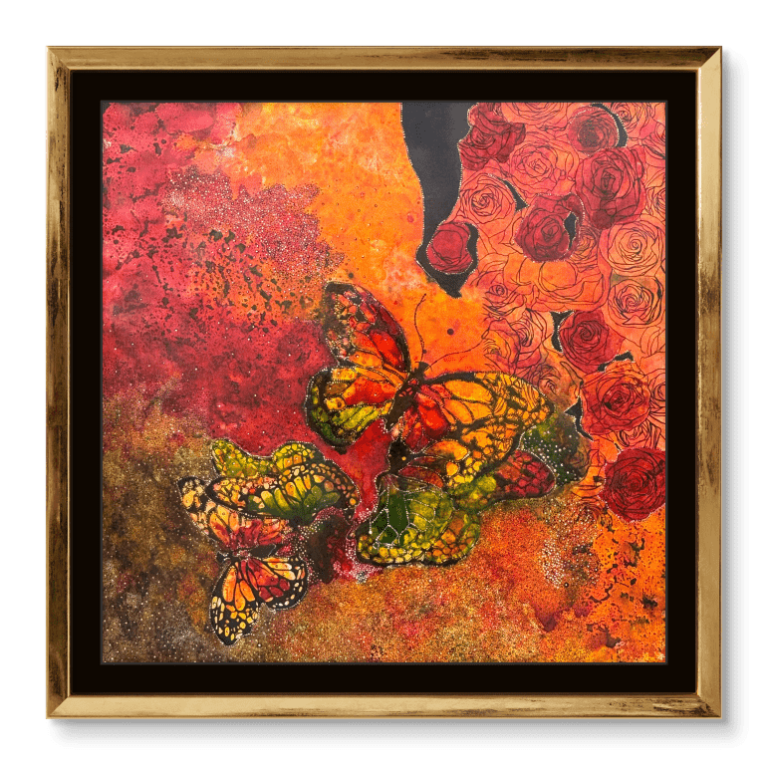
Moving on, Ehsan’s works are a product of mixed media since she believes every medium has a different personality. It is like interacting with different people, adding up to one’s experience in life, expanding their worldview, their soch. Utilizing a recurring theme that includes flowers, butterflies, meticulously placed hands and most significantly, dots of various size. Paired with a rather eloquent usage of colours red, orange and black. The black(s) being an homage to another renowned Pakistan artist Sadequain.

A couple of paintings that struck with me are Fire Burnt Twice and The Sohni mingles with Heer. Fire Burnt Twice is easily the only painting whose tonal shifts stand out the most. Featuring a moth instead of a butterfly is a bit intriguing. You see, the motif of a butterfly has been synonymous to metamorphosis, the rebirth and transformation – of an artist –. And a butterfly holds a certain pretty privilege as well. A moth however, being a not so pretty family member, despite sharing the fundamental physical features is forever exiled. Made to be consumed by the flame. Being that hopeless lover whose unyielding beloved – the flame – never thinks twice before burning down the poor creature. However, the moth paired with a hand, presents a paradoxical imagery. The moth being consumed by the fire, a process depicted via a smooth transition from greens to the reds. The hand is most likely holding the moth back from dying an agonizing death. And precisely that is what Alia Zafar’s poem tries to embody as well. Asking a friend, a lover, a soulmate to meet where words are just not enough and the so called material boundaries have to be transcended.
Where words fail
Come and meet me,
Where colors pale
Come and greet me.
Come hold my hand
And fix my yearnings,
We both walk out
To the wild peaks burning.
-Alia
Zafar’s poem that serves the inspiration behind the strokes of this next artwork, The Sohni mingles with Heer, talks about the pale nothingness and the long lost book. And I think I just might be able to connect my idea of love with that of the poem and the painting. My initial and immediate reaction to the title was, ‘wow that is a lot of love!’ Rightly so the painting is a culmination of the most bold and flamboyant colours, invoking a sense of lifted spirits reaching a climax, which is falling in love.
I think falling in love might be just like that if we were able to visualize feelings. For me, this was the prime example where I understood the symbolic abstraction. Everything became clearer about the art and the artist’s vision. And at the end completely not forgetting the dots. Ehsan equates these numerous dots to cosmos, the universe. And fittingly these dots, however minute they might seem, give every art piece an ethereal feel to it. Just the way one stops, surrendering themselves, staring at the sky on a starry night. These dots get hold of the viewer’s gaze, forcing them to stop and stare. Stand there and connect the dots, ultimately solving the puzzle piece by piece. Ufaq Ehsan’s works are all about harmony, inculcating critical thinking and the conscious contribution of a person within a society. All juxtaposing with a delicate balance that leaves the viewer in awe once they start to understand the context related to the artwork(s).
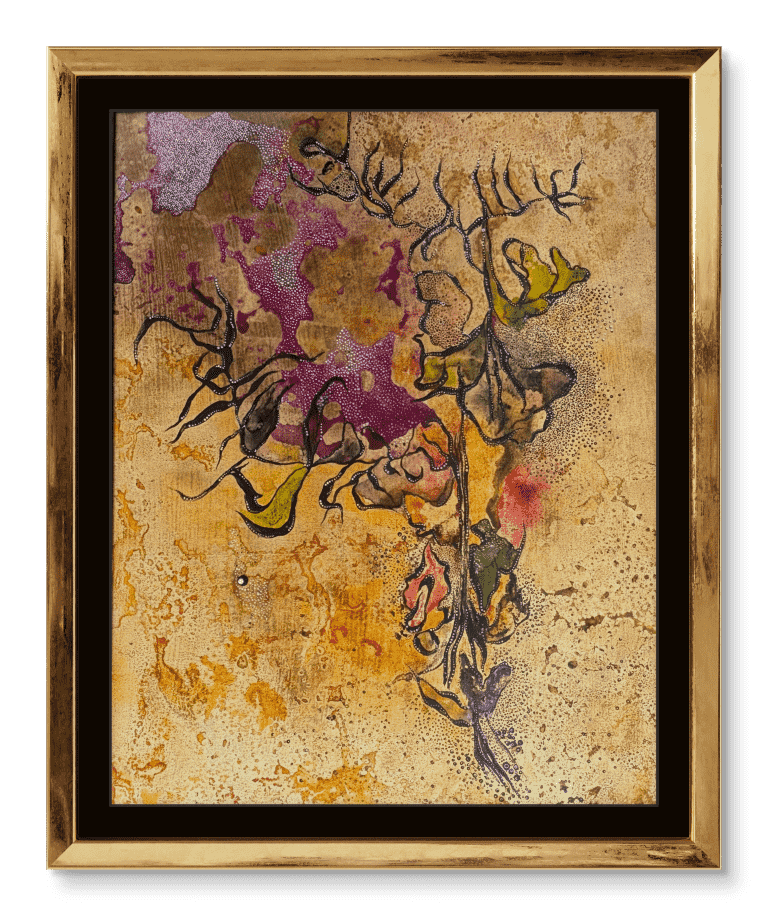
Writer’s Biography

Dania Sarosh
Dania Sarosh is an academic writer currently interning at ArtSoch contemporary. A recent graduate from Government College University, Lahore. She completed her B.A(Hons) in English Language and Literature. From writing in literary competitions and analysing various texts to exploring cultural and artistic scene of the country, she believes in the power of researching and providing unique perspective(s). When not writing or reading she's found crocheting and junk journaling.

Dania Sarosh
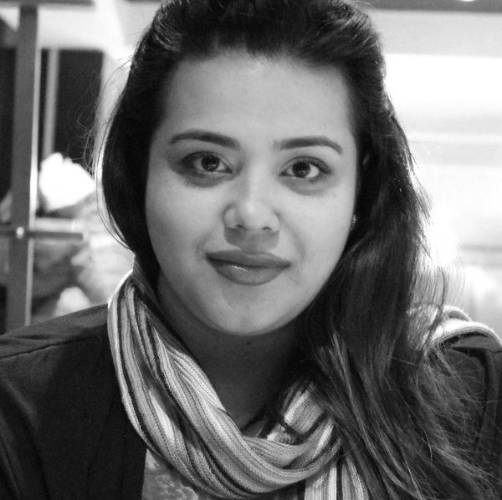
MARIAM HANIF KHAN
Visual Artist, Educator, Curator and Co- founder
Mariam Hanif is a Visual Artist based in Lahore, Pakistan. She received her BFA (hons.) and MA (hons.) degree in Visual Arts from renowned National College of Arts, Lahore. Mariam has been endowed...

MARIAM HANIF KHAN
Visual Artist, Educator, Curator and Co- founder
- Phone:+92 317 5111195
- Email:lahore.queries@artsoch.com

